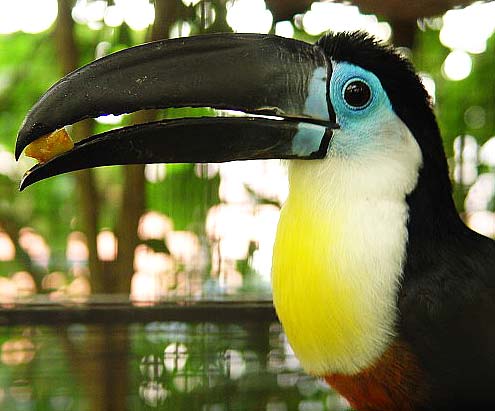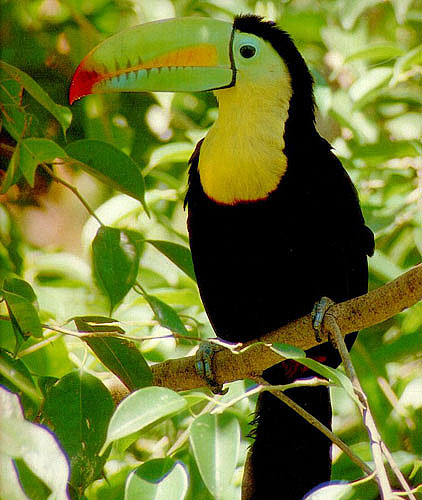Toucan – The Largest Bill on a Bird

Channel-billed Toucan
There are about forty known species of toucan, all of which are easily recognizable by their big, usually brightly colored, bills. They vary in size, from about 14 inches up to 30 inches (36-76cm). Probably the most well known is the largest of all the toucan species, the Toco Toucan with its bright yellow-orange bill which is about 7.5 inches (19 cm) big. The smallest species of toucan is the Aracar Toucanet.
Until recently it was not known why toucans have such large colorful bills. They are unlikely to be used for attracting a mate as both the males and females possess them, and they do not change with the seasons. However, the latest studies suggest that the birds bills are used for air conditioning. Birds don’t sweat and it can be hot in those South American jungles.

Although the bills are large, which may deter enemies and predators with their sheer size, they are useless as weapons as they are not solid. They are made from a structure similar to honeycomb in appearance and so are mainly just holes full of air. This makes them extremely light but useless for fighting or digging holes, or anything else which would require any force to be exerted.
These bills are useful for eating fruit, which is the toucan’s main diet. They are quite lazy birds and like to sit in one place, eating any fruit which is hanging within reach. Such a large bill allows them to reach that little bit further without actually having to move.

It is also great camouflage while they’re sitting amongst brightly colored hanging fruit, although it is unlikely that they are trying very hard to keep a low profile, as they communicate with each other constantly – extremely loudly!
Although their main diet is fruit they are omnivorous, which means that they will also eat insects, lizards, eggs and the chicks of other birds. The long bills allow them to reach inside tree crevices where such creatures may be hiding, and to steal eggs and chicks from the nests of other birds.
